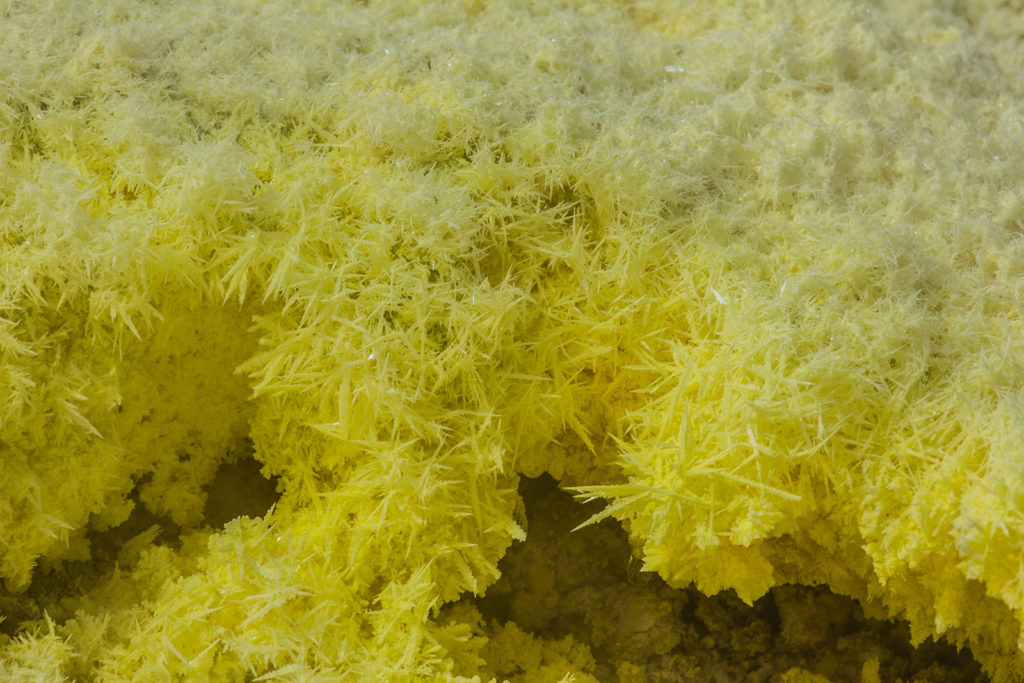The port area of Vulcano is one that remains most impressed in the mind of visitors to the Aeolian Islands. The first thing you notice as you step off the hydrofoil is the classic smell of “rotten egg”, the unmistakable fumes coming from the volcanic fumaroles.
 The unpleasant smell is given by sulphur, which is found inside the gases coming out of the
fumaroles
The unpleasant smell is given by sulphur, which is found inside the gases coming out of the
fumaroles
. The port area is located inside the last
caldera
(see previous link) of Vulcano, which is also where the most gas is emitted, which is why the smell is stronger.
In the port area, fumarole gases are released wherever there is soil not covered by concrete; in some areas where there are some wider cracks there are plumes of smoke.
Fumaroles are also found in the seabeds in front of the port area: the fumaroles in front of the east beach of Vulcano are famous, where the sea literally “bubbles”. The high temperature of the gases heats up that part of the sea, bringing the water to temperatures as high as 35-45 °C. Fumarole gases are also loaded with sulphur, which instantly solidifies in the form of
sublimates
, decreasing immediately from 120-140 °C to room temperature.
The whole port area, the
Stack
above, the alleys and the rock faces are the typical yellow shade of sulphur, which is combined with some white brush strokes of
gypsum
, also formed by the same process of sublimation.